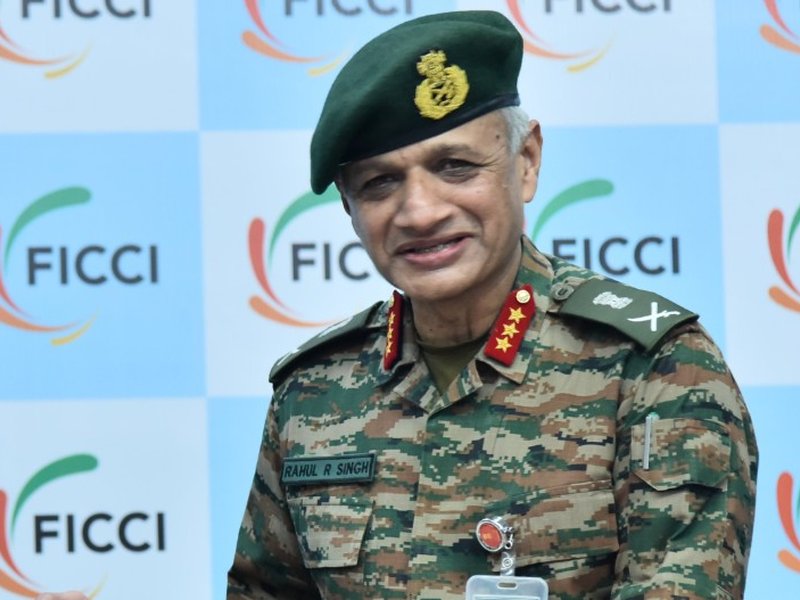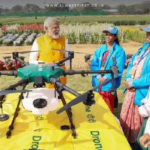
Backdrop of Operation Sindoor
In early May, India launched Operation Sindoor, a swift yet potent military retaliation after a terrorist attack in Pahalgam on April 22. Over 88 hours, the Indian Air Force, using advanced indigenous platforms and precision-guided weaponry, struck nine terror-linked sites across Pakistan and Pakistan‑occupied Kashmir. The operation disabled enemy air-defence systems and degraded militant infrastructure, marking a significant shift in India’s strategic posture.
Pakistan as the ‘Front Face’
Lieutenant General Rahul R. Singh, Deputy Chief of Army Staff, explained that during Operation Sindoor, Pakistan was the overt adversary. However, the complexity of the threat extended far beyond traditional border confrontation. He described facing “one border and two adversaries”, with Pakistan upfront, but China providing covert support, and Türkiye contributing significantly too.
China’s ‘Live Lab’ Strategy
Lt Gen Singh highlighted that 81% of Pakistan’s military hardware over the past five years has been sourced from China, making Pakistan an ideal ground for Chinese weapons to be validated under real combat conditions. He likened this to a “live lab” for China, referencing ancient Chinese strategy, the “kill with a borrowed knife” approach, where Beijing uses Pakistan to apply pressure on India without direct confrontation.
Real-Time Intelligence Transfers
A critical concern was China’s real-time intelligence support. During DGMO-level talks, Pakistani negotiators received up-to-date information on Indian force deployments, vectors India later neutralised, suggesting China’s direct role in electronic warfare and strategic communication disruption.
Türkiye’s Role and Drone Warfare
Lt Gen Singh also drew attention to Türkiye’s contribution, noting the deployment of Bayraktar drones and the presence of Turkish personnel supporting Pakistani forces. This alliance further exposed the operational depth of the Pakistan–China–Türkiye nexus.
Air Defence and Civilian Vulnerabilities
While civilian centres remained largely unharmed this time, General Singh emphasised that future operations may target cities. India must therefore accelerate development and deployment of robust air defence systems, it does not yet possess efficient, Israel‑style point defence like the Iron Dome.
Lessons for Indigenous Defence and Technological Autonomy
The operation underscored a dire need for self-reliance. India’s successes using domestically developed platforms such as BrahMos missiles, Akash surface-to-air defence, and loitering munitions validated the “Atmanirbhar Bharat” approach. However, Lt Gen Singh and DRDO leadership urged acceleration in indigenous R&D, particularly in electronic warfare, drone countermeasures, VSHORADS, MPTAGMs, and next-gen sensors.
Moreover, India has greenlit the fast-track launch of 52 defence surveillance satellites by 2029, alongside a comprehensive military space doctrine. These platforms will bolster reconnaissance, early warning, and strategic awareness.
Integrated Strategy and Storm Control
Lt Gen Singh praised India’s strategic clarity, data-augmented planning, and controlled escalation during the operation. Out of 21 potential targets, nine were selected based on intelligence and validated only at the final hour, showcasing disciplined restraint.
Implications for Regional Security and Future Conflicts
This operation revealed a broader strategic pattern: China is embedding itself in South Asian conflicts to test and improve weapons; Pakistan and Türkiye are active co-adversaries; and India’s civilian and military vulnerabilities are increasing. In this chessboard of conventional and fifth-generation warfare, India must ensure sovereignty through superior air defences, indigenous technology, space-based intelligence, and robust digital warfare capabilities.
Conclusion: Preparedness is Non‑Negotiable
Operation Sindoor may have ended, but its lessons echo loudly. Lt Gen Singh’s admonition, “we must move fast and be ready for next time”, resonates with India’s evolving defence imperative. The country now stands at a strategic inflection point: balancing rapid indigenisation, global diplomacy, and deterrence to safeguard its frontiers and its future.









































Leave a Reply